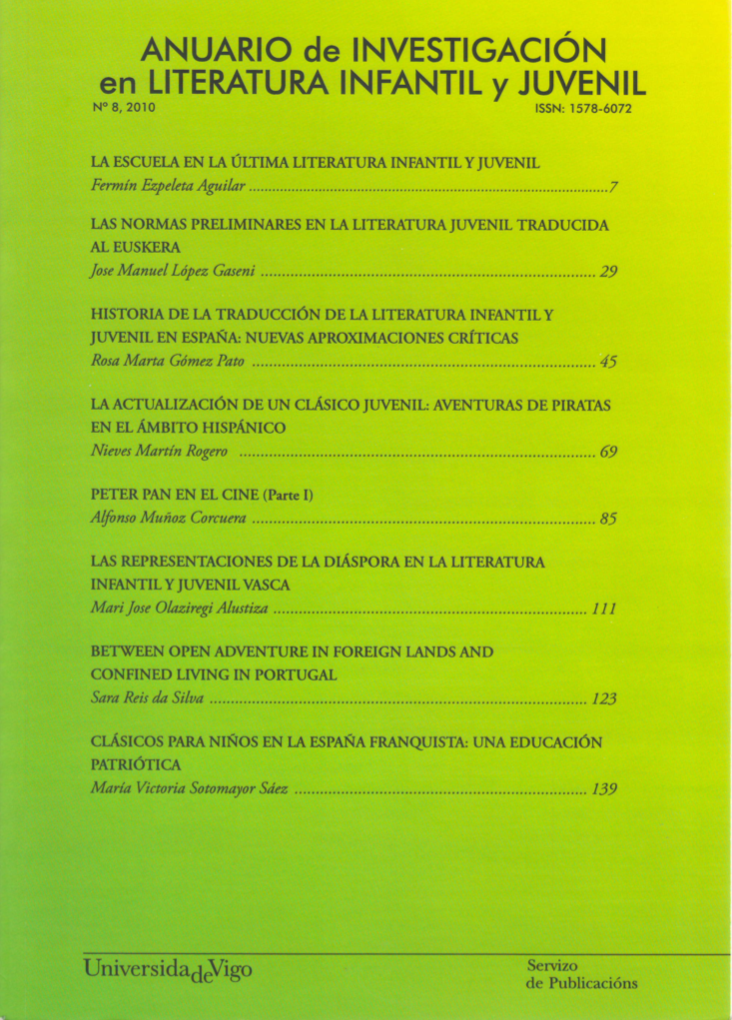La actualización de un clásico juvenil: Aventuras de piratas en el ámbito hispánico
Keywords:
adventure stories, pirates, Spanish literatureAbstract
Of all the different literary modes within young adult literature, the pirate adventure story is perhaps the most typified of all. We can trace its origins back to the sixteenth and seventeenth century, where we can find examples of pirates featuring in classics such as Cervantes Don Quijote and as the one of the main obstacles that the Byzantine hero must overcome in the Byzantine novels. Nevertherless, it is not until the nineteenth century, and due to the contribution of world classic authors such as R.L Stevenson, W. Scott, J. Verne or E. Salgari, that the pirate becomes a well-established literary figure. In Spain, the work of these famous writers was made widely available in translations and adaptations all throughout the twentieth century. In fact, they are still a source of inspiration for some current Spanish authors whose work echoes and is tinged by nostalgia for this Golden Age of the adventure story. In our current globalised society, the pirate adventure story acquires new connotations, given that it allows young adult readers to discover foreign lands as well as to draw comparisons and contrasts with one's own culture from a twenty-first century perspective. In addition, the pirate adventure story contributes to the nationalization of a literary archetype. In the Spanish literary field, in particular, we find exotic settings, from the legendary Caribbean Sea in Fernando Martínez El Juego del Pirata to the Eastern shores of the trilogy by Juan Madrid starting with Los Piratas del Ranghum. These settings alternate with Spanish natives ones, such as the Atlantic Ocean that washes Fisterra in Bala Perdida by the Galician writer Manuel Rivas.
Downloads
Downloads
Published
Issue
Section
License
Anuario de Investigación en Literatura Infantil y Juvenil has been published in open access from 2019 (vol. 17). The journal allows the authors to retain publishing rights. Authors may reprint their articles in other media without having to request authorization, provided they indicate that the article was originally published in Anuario de Investigación en Literatura Infantil y Juvenil. The journal holds the copyright of printed issues (volumes 0-16).





